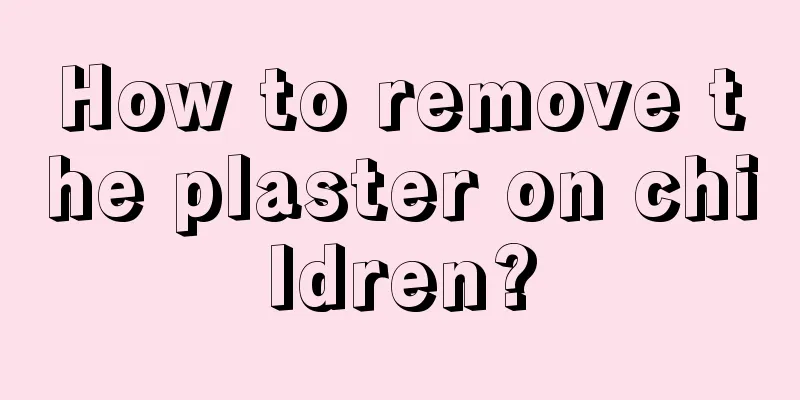What causes hypertrophy of the nasal conchae in children?

|
I wonder if you have ever encountered such a situation in daily life: the child has enlarged nasal concha! I believe this is difficult for parents to accept and understand. Of course, it is also a blow to the children themselves. So, what causes nasal concha hypertrophy? What should we do? Let’s analyze the causes of nasal concha hypertrophy today! It usually develops from chronic simple rhinitis. The cilia of the mucosal epithelium fall off and become a stratified cuboidal epithelium. The submucosal layer undergoes edema and then fibrous tissue hyperplasia, causing the mucosa to thicken. Over time, it may become mulberry-like or polyp-like, with hyperplasia of the periosteum and bone tissue, and hypertrophy of the nasal concha bones. symptom 1. Severe nasal congestion, often persistent, with frequent mouth breathing and decreased sense of smell. Introduction to turbinate hypertrophy. Introduction to turbinate hypertrophy. (ii) The nasal discharge is thick and often mucous or mucopurulent. Due to postnasal drip, the throat is irritated and causes coughing and sputum. (3) When the enlarged middle turbinate compresses the nasal septum, it can cause compression or inflammation of the anterior ethmoid nerve, which is derived from the ophthalmic branch of the trigeminal nerve. This can cause irregular attacks of frontal pain that radiates to the bridge of the nose and eye sockets. This is called anterior ethmoid neuralgia, also known as anterior ethmoid nerve syndrome. (iv) The mucosa is swollen, pink or purple, with an uneven surface, or node-shaped or mulberry-shaped, especially at the front end of the inferior turbinate and its free edge. There is no obvious depression when the probe is pressed lightly, but it feels hard to the touch. (V) The inferior turbinate is significantly enlarged, or both the inferior and middle turbinate are enlarged, often leading to nasal obstruction. There is mucous or mucopurulent discharge from the nasal floor or inferior nasal meatus. (vi) Mucosal contraction is not obvious after topical application of vasoconstrictors. (VII) Severe nasal congestion, often persistent, frequent mouth breathing, and decreased sense of smell. Previous methods for treating inferior turbinate hypertrophy, such as freezing, laser, microwave, and partial inferior turbinate resection surgery, have destroyed the normal nasal mucosal structure and affected the physiological function of the nasal cavity. With the gradual understanding and attention paid to the physiological functions of the nasal cavity, inferior turbinate surgery should continue to move towards the goal of "protecting the function of the inferior turbinate while reducing it to the optimal volume." The above content is some knowledge about how nasal concha hypertrophy is caused that we want to present to you today. We hope it can help you. For children, encountering such troubles during their growth process is very distressing and makes them feel inferior. Therefore, during the treatment of nasal concha hypertrophy, we must pay close attention to the children's mental health. |
<<: What to do if your child's mouth ulcer doesn't get better
>>: What is the cause of the pain in the back of the child's head?
Recommend
How long is it best for newborns to be exposed to the sun?
The arrival of a baby makes many people very happ...
Analysis of how many degrees a baby has a fever at eight months old
There are many issues regarding baby health, and ...
Baby's teeth are clacking
Teeth clenching is not only a problem for adults,...
What can’t babies eat if they have dysentery? This knowledge must be understood
Babies are prone to dysentery. It is not a seriou...
Correction of sleeping posture for newborn babies
Newborn babies need careful care. If the baby'...
What causes unstable breathing in newborns?
A few days after the birth of a newborn, many car...
How many days does it usually take for a child’s fever to subside?
For parents, the thing they care about most is th...
What to do if a child has a fever and diarrhea
Young children have low immunity and produce fewe...
What should I do if my child has synovitis? These methods have proven to be effective
Synovitis is a disease that can cause greater har...
What causes intussusception in children?
Many parents will find that their children’s diet...
Why does a child sweat when he just falls asleep?
Many parents will find that their children will h...
Causes of indigestion and vomiting in children
Today, the editor will explain to you in detail t...
Is it normal for a child to be sleepy when having a fever?
Children have relatively poor resistance, so it i...
What's going on when a baby blows bubbles from his mouth?
Babies blow bubbles from their mouths because the...
Causes of fever in babies
Fever in babies is a very common symptom of the d...









